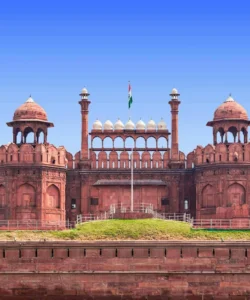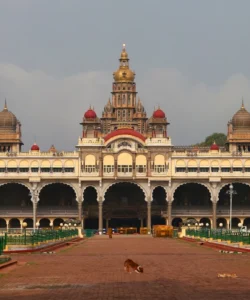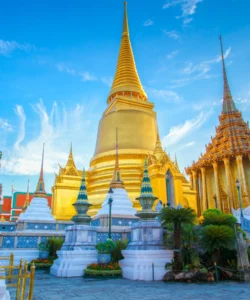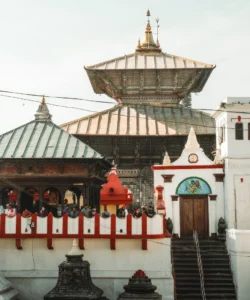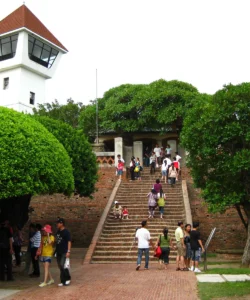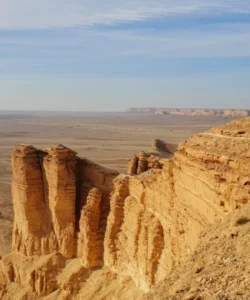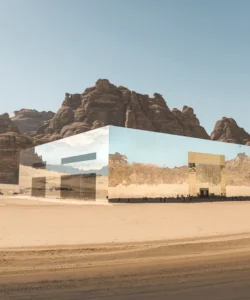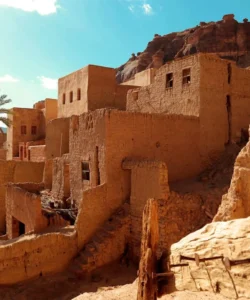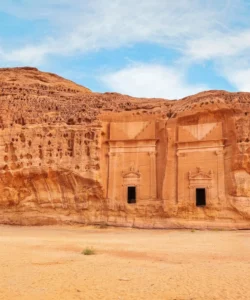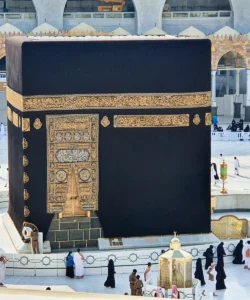Tiger’s Nest Monastery, officially known as Paro Taktsang, is an awe-inspiring and profoundly sacred Buddhist site that clings dramatically to a cliffside in the upper Paro Valley of Bhutan. It is the most iconic cultural symbol of Bhutan and a truly unique architectural marvel, revered for its mythological origins and the sheer audacity of its construction.
Name: Tiger’s Nest Monastery (Dzongkha: སྤ་གྲོ་སྟག་ཚང་, Paro Taktsang; also Taktsang Palphug Monastery)
Address: Paro Valley, Paro District, Bhutan. It is located approximately 10 kilometers (6.2 miles) north of Paro town, nestled into a precarious cliff at an elevation of 3,120 meters (10,240 ft) above sea level, towering about 900 meters (3,000 ft) above the Paro valley floor.
How to Get There:
Accessing Tiger’s Nest is a pilgrimage that involves a significant trek, and all foreign visitors to Bhutan must arrange their travel through a licensed Bhutanese tour operator.
- By Air to Paro (PBH): The most common way to enter Bhutan is by flying into Paro International Airport (PBH), the country’s only international airport. Flights are available from various regional cities like Bangkok, Kathmandu, Delhi, Singapore, and Dhaka. From Paro Airport, it’s a short drive to Paro town.
- From Paro Town to the Trailhead: Your tour operator will arrange a driver to take you to the Tiger’s Nest trailhead, which is about a 20-30 minute drive from Paro town.
- Trekking to the Monastery: The only way to reach the monastery is by hiking.
- The trek is approximately 6.5 km (4 miles) round trip, with an elevation gain of about 550 meters (1,800 ft). It is considered a moderately challenging uphill hike.
- The journey typically takes 2-3 hours to ascend, plus time for exploration at the monastery (around 1 hour), and 1.5-2 hours for the descent, making it a 5-7 hour round trip.
- Halfway Point: About halfway up the trail, there’s a cafeteria where you can rest, have refreshments, and get your first stunning views of the monastery. Some visitors choose to end their hike here.
- Final Ascent: The last section involves a steep trail, including stone steps, and then a series of narrow bridges and steep stairways that connect different parts of the monastery.
- Horse Ride: For those who prefer not to trek the entire way, horses can be hired from the trailhead to carry you up to the cafeteria viewpoint (around two-thirds of the way). From there, you still need to walk the remaining, steeper section.
- Entrance Fee: There is an entrance fee for the monastery.
- Dress Code: As a sacred site, modest dress is required (shoulders and knees covered). Footwear must be removed before entering the monastery buildings. Cameras and bags are typically not allowed inside the monastery’s sacred halls and must be stored in lockers at the entrance.
- Best Time to Visit: The best times are during the spring (March to May) and autumn (September to November) seasons. The weather is generally mild, skies are clear, and the surrounding landscapes are vibrant with flowers (spring) or autumn foliage. Visiting early morning is recommended to avoid crowds and for cooler temperatures.
Landscape and Architecture:
Tiger’s Nest Monastery’s “architecture” is a marvel of human ingenuity seamlessly integrated with its dramatic natural setting, creating a powerful blend of spiritual devotion and audacious engineering.
- Cliffside Perch: The most striking feature is its precarious position, clinging dramatically to the side of a sheer granite cliff, nearly 1 kilometer (3,000 feet) above the Paro Valley floor. It appears almost impossible to reach, seemingly defying gravity.
- Bhutanese Traditional Style: The monastery complex is built in the distinctive Bhutanese architectural style, characterized by whitewashed stone walls, timber structures, and intricately carved wooden windows, doors, and balconies. The multi-tiered roofs are often adorned with gilded ornamentation.
- Integration with Natural Terrain: The structures of the monastery complex are not built on a flat foundation, but rather meticulously follow the natural contours and crevices of the cliff face. Buildings are nestled into rock overhangs, caves, and ledges, giving the impression that they are part of the mountain itself.
- Interconnected Buildings: The complex consists of four main temples and several monastic dwellings, all interconnected by a labyrinthine network of steep stairways, narrow bridges, and small passages.
- Sacred Caves: The monastery is built around several sacred caves, where Guru Padmasambhava (Guru Rinpoche) is believed to have meditated. These caves are integral to the monastery’s spiritual essence. The original meditation cave is the most sacred.
- Vibrant Murals and Statues: Inside the temples, the walls are adorned with vibrant murals depicting Buddhist deities, legends, and scenes from Guru Rinpoche’s life. Numerous intricate statues of Buddhas, Bodhisattvas, and other sacred figures are found throughout the shrines.
- Waterfalls and Prayer Flags: During the trek, you’ll encounter a beautiful waterfall that plunges over the cliff, passing beneath a bridge on the approach. Colorful prayer flags (lung dhar) are strung across the paths and chasms, fluttering in the wind, symbolizing blessings and peace.
What Makes It Famous:
- Iconic Cliffside Location: Tiger’s Nest Monastery is globally famous for its awe-inspiring and seemingly impossible location, perched dramatically on a sheer cliff. This visual spectacle makes it one of the most recognized and photographed landmarks in the world.
- Legend of Guru Rinpoche: Its fame is deeply rooted in the legend that Guru Padmasambhava (Guru Rinpoche), who introduced Buddhism to Bhutan, flew to this site from Tibet on the back of a tigress in the 8th century, subdued demons, and meditated here. This powerful mythological origin gives it immense spiritual significance.
- Sacred Pilgrimage Site: It is one of the most sacred pilgrimage sites for Buddhists, attracting devotees from Bhutan and around the world who undertake the challenging trek as an act of devotion and to gain spiritual merit.
- Architectural Marvel: The sheer engineering feat of constructing such an intricate complex on a precarious cliff face in the 17th century (and rebuilding it after a fire in 1998) without modern machinery is a testament to Bhutanese skill, dedication, and ingenuity.
- Symbol of Bhutan: Tiger’s Nest is the undisputed cultural and spiritual icon of Bhutan, deeply intertwined with the country’s identity and its strong Buddhist faith. It’s often the first image that comes to mind when one thinks of Bhutan.
- Breathtaking Views: The trek and the monastery itself offer panoramic views of the lush Paro Valley below and the majestic Himalayan mountains in the distance, providing stunning natural beauty alongside the architectural wonder.
- Profound Sense of Tranquility: Despite its popularity, the monastery exudes a profound sense of peace and spirituality, making the challenging journey deeply rewarding.
Differences from Some Other Wonders:
- Precarious Cliff-Hugging Location: While some monasteries or temples are built on hills (Swayambhunath) or cliffs (Uluwatu Temple), Tiger’s Nest’s fame is singularly tied to its extreme and visually astonishing “clinging to the vertical cliff face” position. It feels more integrated into the rock than simply on it.
- Mythological “Tigress Flight” Origin: The specific, highly vivid legend of Guru Rinpoche arriving on the back of a tigress is a unique and famous founding myth that sets its spiritual narrative apart from other religious sites.
- Trek-Only Access (for most): Unlike many other major monuments that can be reached by road or even vehicles directly to the entrance, Tiger’s Nest’s access is almost exclusively via a challenging hike, making the physical journey an integral and transformative part of the experience. (While horses can go part way, the final crucial section is still on foot).
- Exclusive Bhutanese Cultural Context: Its distinct Bhutanese Buddhist architectural style, its strict association with Guru Rinpoche’s specific miracles in Bhutan, and its role as a national icon within a kingdom that emphasizes Gross National Happiness give it a unique cultural and national identity that is very specific to Bhutan.
- Lack of Broad Religious Syncretism: Unlike some sites that show a clear blend of Hinduism and Buddhism (like Swayambhunath or Ellora Caves), Tiger’s Nest is almost exclusively a Tibetan Buddhist site, embodying the Nyingma and Drukpa Kagyu traditions specifically.
- Absence of Extensive Historical Archives (compared to some monasteries): While significant, its fame is less about its historical documents or vast library collections (which might be the primary draw for other ancient monasteries) and more about its physical location, spiritual narratives, and architectural marvel.
- “Living Temple” Despite Reconstructions: Despite suffering a major fire in 1998, the meticulous and faithful reconstruction efforts, largely by hand, have ensured its continuity as a vibrant, living monastery, maintaining its authenticity and spiritual power.
Tiger Nest Monastery Photos:





























